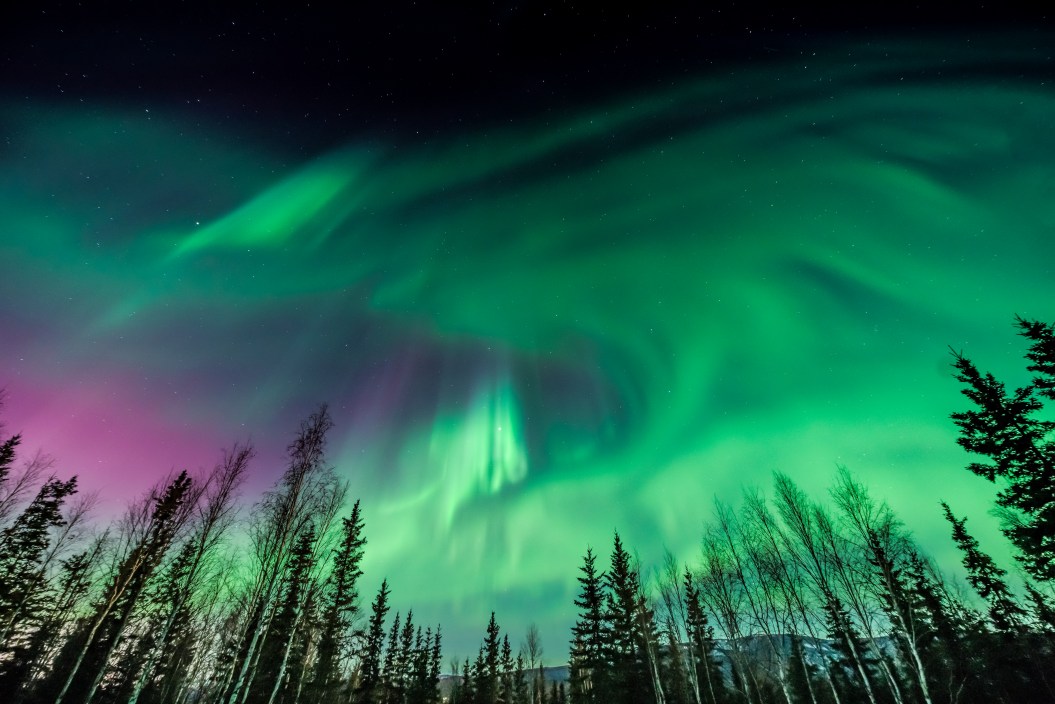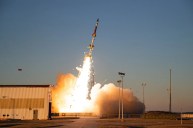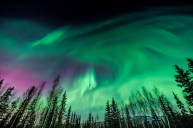Earlier this week, an aurora forecast from the University of Alaska Fairbanks Geophysical Institute projected that 17 states across the northern Lower 48 might have a rare chance to see the aurora borealis on July 13. Considering seeing the Northern Lights is on pretty much everyone's bucket list but it normally requires travel north, there was understandably a lot of excitement.
But, in some bummer news, that forecast has shifted. Updates released the night of July 10 show a new forecast with a much more mild night of aural activity—in fact, no activity at all for most of us.
The Northern Lights are still expected to be active (mostly July 13), the band of aural activity has shifted north from what was originally projected.
That means the Northern Lights might be visible in the limited latitudes of Montana, Minnesota, and Vancouver. But mostly, they will now be over Alaska and Canada, centered on northern cities such as Fairbanks and Whitehorse—and these northern cities are still in the heart of summer where the sun sets around midnight and rises 2 to 3 hours later, making it very difficult to see the aurora borealis in the sky.
Hardly the show that was originally forecasted.
An Atmospheric Phenomenon
The Northern Lights, also known as the aurora borealis, is an incredibly peaceful, ethereal phenomenon to witness, with green and purple lights seeming to dance across the night sky.
But, as Space.com explains, this light show is actually the product of a rather violent event.
The sun is made of superhot gasses that are composed of electrically charged particles known as ions. These ions stream continuously from the sun's surface in a 'solar wind'. Once this solar reaches Earth, the ions slam into the Earth's atmosphere at speeds up to 45 million miles per hour.
Thankfully, the Earth's magnetic field blocks these ions from truly entering the atmosphere, redirecting them to the North and South Poles, where we typically see the Northern Lights.
The colors, ranging from green to purple to orange, are caused by the ions colliding with different chemicals at different levels in the atmosphere. The most common color, a green-yellow hue, is caused by collisions with oxygen at lower altitudes. Reds and blues, less frequently seen, are caused by ions striking nitrogen atoms.
Solar Winds are Apparently Really Hard to Predict
Don Hampton, a research associate professor at the Geophysical Institute, told NBC News that aurora forecast models are based on a limited number of input measurements that track activity on the sun and the space between the Earth and the sun.
Because there are only a few instruments and satellites dedicated to collecting the data, Hampton explained that "the models typically have a wide range of predictions since the observations are relatively sparse."
The speed and direction of a large solar storm or wind, and therefore potential Northern Lights activity, can be estimated when it leaves the sun. However, once in the space between the sun and the Earth, the solar storms can't be tracked, and they can be diverted or reduced during their travels. This can cause the final impact with the Earth's magnetic field to be different than originally predicted, which is what is currently happening with the current forecast.
Consolation Prize: Plan a Proper Northern Lights Trip
If you had your heart set on seeing the Northern Lights this week, we don't recommend hopping on a plane north to Fairbanks or Whitehorse just yet. These northern cities are in the middle of the midnight-sun season, with the sun setting around midnight and rising 2 to 3 hours later, making it very difficult to see the Northern Lights.
If seeing the aurora is on your bucket list, a winter trip north is your best bet.
Though the northern latitudes are currently experiencing extremely long days, the inverse is extremely long nights in the winter, giving would-be Northern Lights viewers ample opportunity to catch a glimpse.
In places such as Fairbanks, Alaska, the aurora can be seen as early in the winter as September and as late as April. Finland, Iceland, and even northern Scotland are all also safe bets for seeing the Northern Lights.
READ MORE: 3 Great State Parks for Stargazing Across the Country




